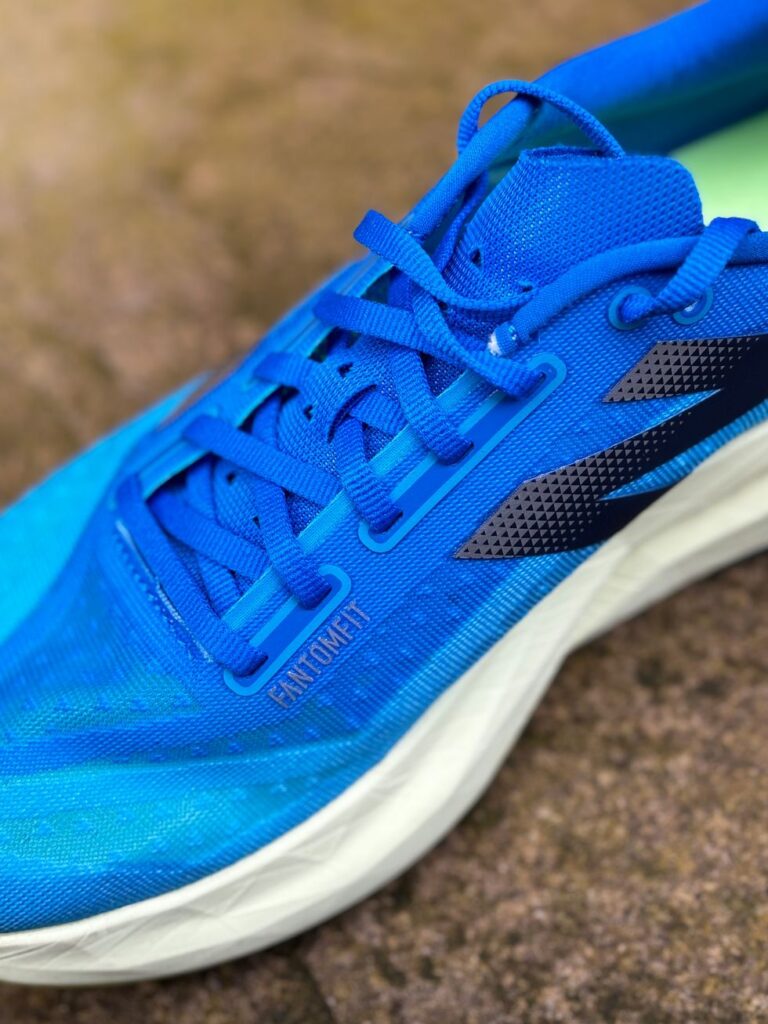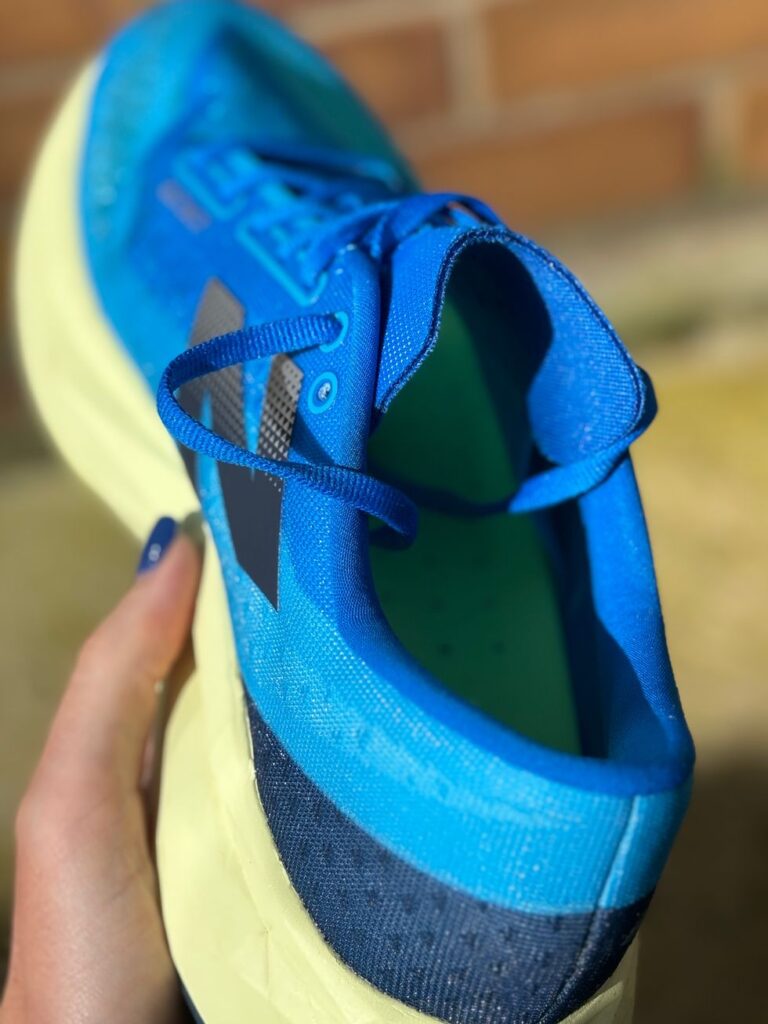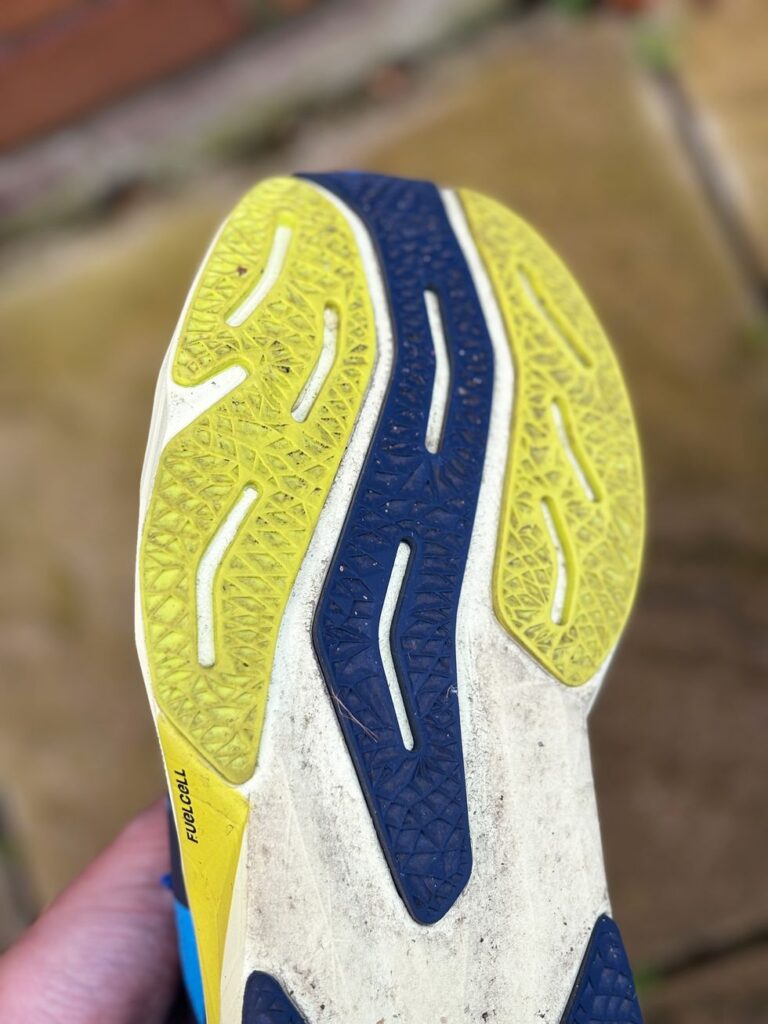Is this one of the best daily trainers we’ve seen in 2024?
BY ALI BALL

- Weight: 212g (M), 168g (W)
- Heel-to-toe drop: 6mm
- Stack height: 30mm heel, 24mm forefoot
- Use: Speedwork/racing/everyday

The shoe
A quick glance at the New Balance Rebel v4 and you may well mistake it for the top-end SuperComp Elite v4 racer — especially since the two come in matching colourways. But, unlike the shoe’s carbon-plated counterpart, which is intended to be used for your speediest sessions and on race day, the Rebel is designed to be fast, responsive and versatile enough to use as an everyday training shoe. In fact, New Balance claims that ‘the Rebel will become your go-to shoe for any kid of run’. And at $220, it’s a relatively affordable offering.
So, is the Rebel v4 too good to be true or does it warrant a spot in our pick of the best running shoes right now? Here are my thoughts.
New Balance Rebel v3 vs Rebel v4: What’s new?
Similarly to most of the New Balance running shoes we’ve seen released over the past year, the Rebel has received some pretty hefty changes from the previous iteration. But I’d say these are all for the best.
First up, there’s a brand-new midsole made of a PEBA/EVA blend. The v3 used an entirely EVA foam, which was lovely and soft but lost some of its rebound over time. Switching to the PEBA blend means the Rebel has the added benefit of feeling responsive and fast, as well as cushioned and stable. The PEBA part of the formula is the same foam used in the SC Elite v4.
In terms of stack height, the Rebel v4 packs in 30mm at the heel and 24mm at the forefoot – both up 3mm on the v3. Overall, though, it’s still a relatively low stack compared with a lot of cushioned shoes on the market, but this doesn’t make it any less comfortable underneath. If anything, it offers a more natural ground feel that will appeal to purists and more mindful runners.
The 6mm heel-to-toe drop remains the same — good news for heel strikers or those struggling with hip or knee pain. Despite the extra volume, it still feels lovely and lightweight, too.


Up top, we’ve got a redesigned upper that uses the same FantomFit technology as the SC Elite v4 — an old technology NB has brought back on some of its latest models. This is a heat-bonded film that allows for a much thinner mesh package, so as not to overbuild the shoe. I’m a big fan of FantomFit. While it’s perhaps not as foot-hugging as the v3’s thin knit upper, it is more durable and has the same great breathability.
Like the SC Elite v4, the Rebel has also lost that iconic high curve design on the heel that’s used across most of the FuelCell line. When I spoke to New Balance designers last year, they said this was a deliberate weight-saving move from the brand.
How does the New Balance Rebel v4 fit?
I got the Rebel v4 in the same size as all my other New Balance shoes, which tends to be a half a size bigger than my regular shoe size. Compared to the previous iteration, it is a lot wider in the forefoot, particularly at the back of the toe box. As someone with standard to wide-ish feet, this wasn’t a problem for me, but I can see those with narrow feet struggling to feel locked in.
There’s a moderate amount of padding around the heel counter and it’s pretty flexible. Again, I personally didn’t experience any rubbing or hotspots, but some testers have found some Achilles irritation on the first couple of runs.


The tongue is what lets the Rebel v4 down a bit, which is funny because this is the area where I felt the SC Elite v4 also fell short. It’s incredibly thin and looks like two pieces of fabric have just been glued together – and the edges aren’t finished. However, the good thing is it stays in place and doesn’t furl into itself like the Elite v4.
What’s it like to run in the New Balance Rebel v4?
Straight out of the box, the Rebel felt fun, light and energetic – even on an initial 10km easy run. The new PEBA blend midsole really comes into its own, combining with full-foot flexibility and gentle forefoot rocker to make it feel very peppy, despite its lack of a carbon fibre plate. The slightly taller and wider bed of cushioning also provides a stable base at all speeds.
Talking of which, this really is a shoe that’s capable of handling all paces, from an all-out interval session to easy, cruising kilometres. If you wanted to, I’d say you could use the Rebel for anything from a 5k to a full marathon, but it probably comes into its own most over the half-marathon distance. For $220, this really is great value for money, especially when you consider similarly versatile shoes cost more (the Cloudmonster 2 retails for $325, for example).
The only time where I’ve struggled in the Rebel v4 is running up the very steep hill which leads to my house. Here, the midsole compresses a bit too much and I feel like I’m dragging my feet. But on fast and flat terrain, the shoe comes into its own, and I’ve been reaching for it for intervals and recovery runs alike.
RW Verdict
Quite simply, the Rebel v4 is an excellent shoe – and one that proves you don’t always need a carbon plate to hit those faster efforts. Built to deliver maximum propulsion with minimal weight, the Rebel v4 offers fun and versatility across virtually every speed and it’s definitely cemented a place in my shoe rotation.
If you’re not sure the shoe is for you, though, consider the Asics Novablast v4. It offers a similarly bouncy and versatile ride, but it’s slightly chunkier and heavier than the Rebel. This means you’re sacrificing some speed, but you’re gaining a touch more cushioning.